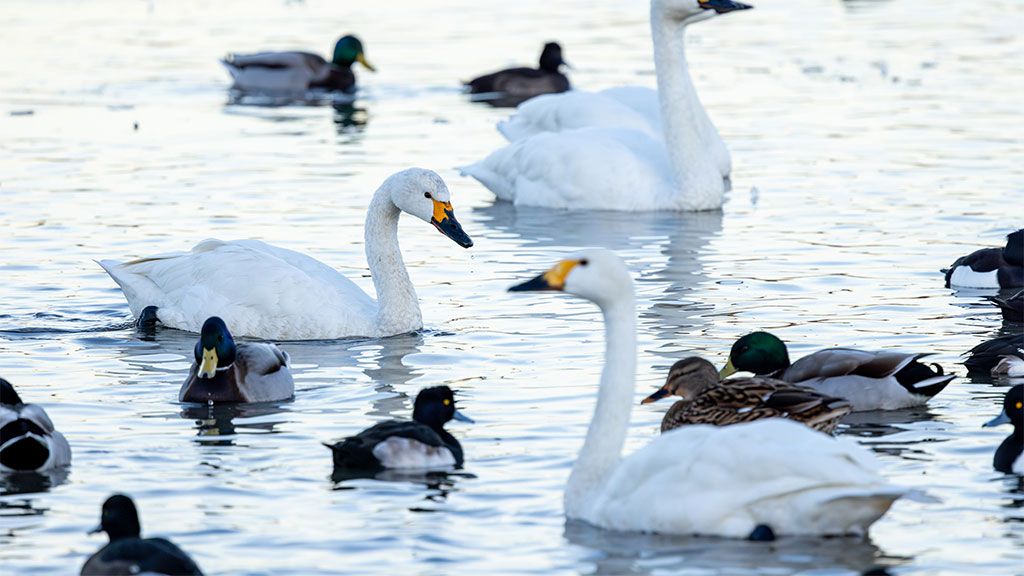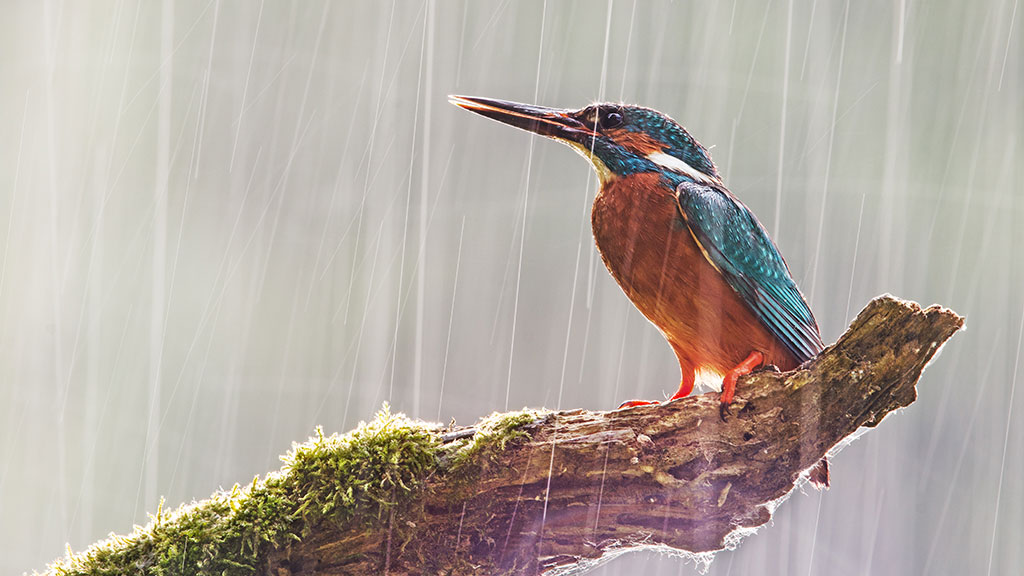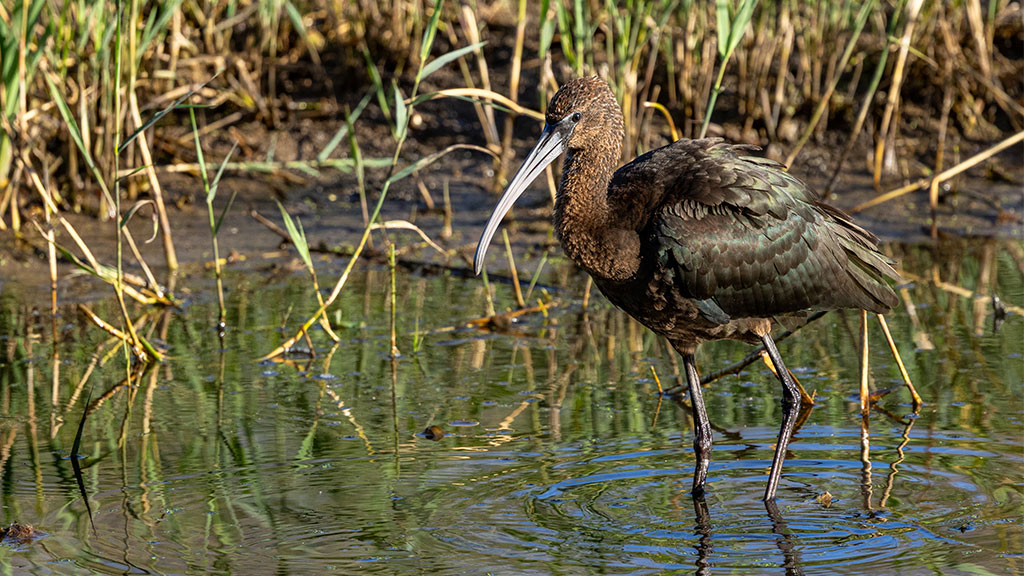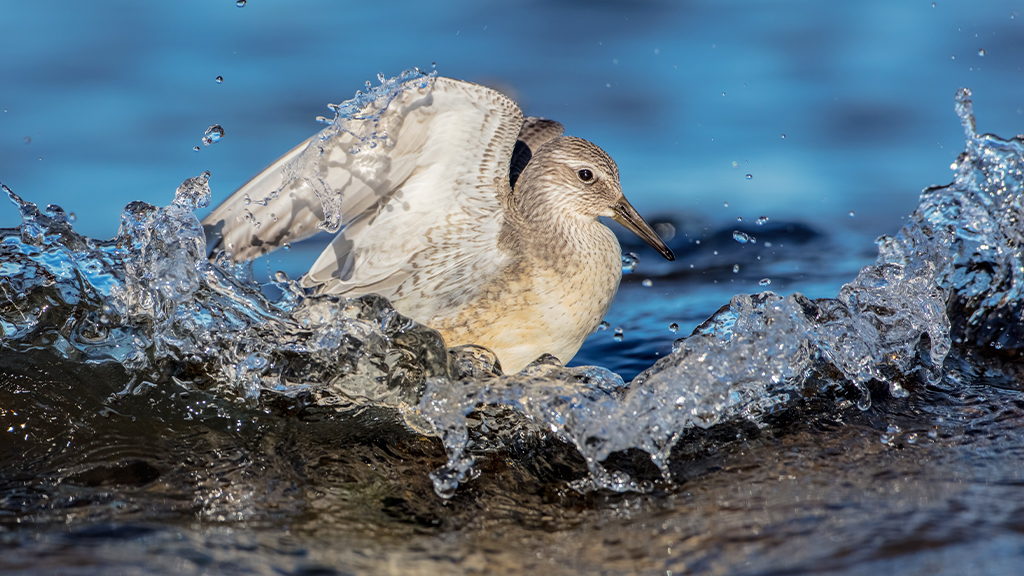Top 10 migrant birds to see at WWT reserves this autumn
Lively, noisy and often spectacular, birds arriving on our wetlands to spend the winter are a welcome sight as the nights draw in, bringing new life to the landscape.
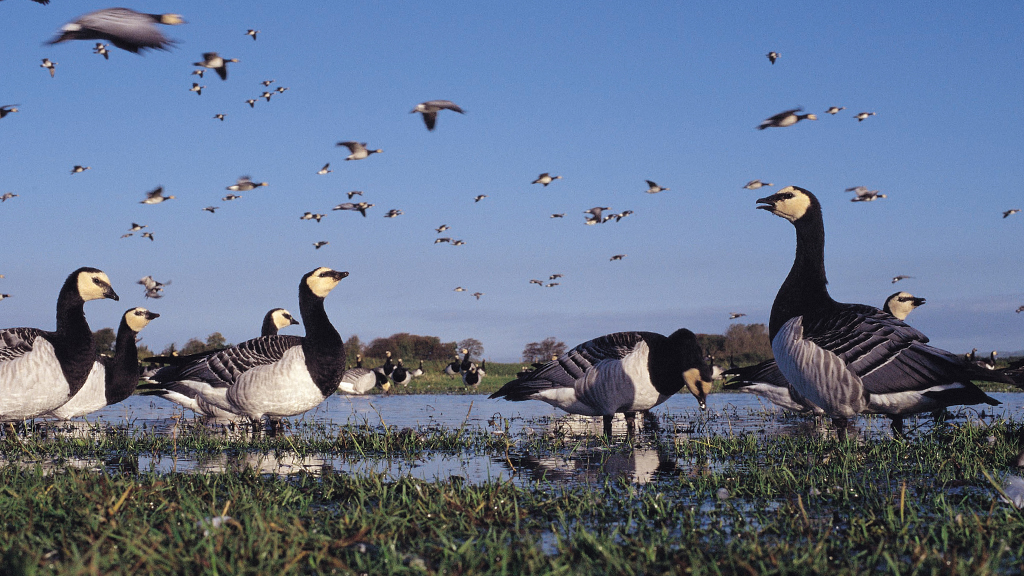
Mid-autumn, it can feel like the world is pausing. Fair-weather birds, like sedge warbler and cuckoo, that visit to breed in wetlands in the spring and summer months, have long set off south. But the moment of calm is short-lived.
Before we know it, passage waders such as wood sandpiper and red knot are appearing on every wetland no matter how small, which in turn give way to those that will stay for the winter, like golden plover and curlew. Next come the wintering waterbirds: sporadic skeins of geese, family groups of swans and droves of ducks.
Here we count down some of our favourites – how many will you see?
10. Russian white-fronted goose
Anser albifrons
Where: Best seen at Slimbridge, where three-figure counts spend the winter.

Thousands of these birds used to winter in the south of England, migrating from their breeding grounds in arctic Russia. However in recent years as our winters become milder, they’ve been stopping short in Europe.
You can still see over 100 at Slimbridge, identifiable by the white around their bill and black belly stripes. These birds, compared to their Greenland cousins flavirostris, are slightly smaller, shorter necked, lighter plumaged and with a slightly smaller, pink bill.
9. Barnacle goose
Branta leucopsis
Where: Caerlaverock

Birds migrate from Svalbard, via the Norwegian coast to winter on the Solway Firth, at Caerlaverock, where thousands can be seen from mid-October and throughout the winter.
People used to believe that these geese hatched from similarly coloured goose barnacles, hence the name, as no one on their wintering grounds ever saw them nesting! That is until people began fitting these geese with electronic tags, so nowadays we fortunately know better, but the geese still have a bit of a mysterious air to them.
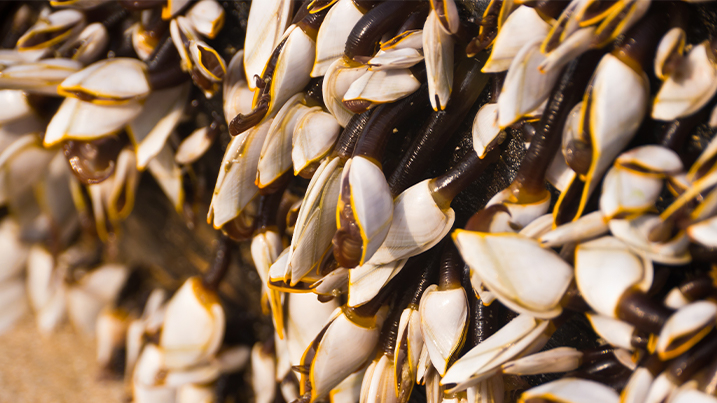
8. Light-bellied brent goose
Branta hrota
Where: Castle Espie

Light-bellied brent geese are the smallest goose to visit the UK and migrate the furthest, making an epic journey of more than 4,600km. These are sturdy little geese with a charcoal-coloured upper that gives rise to part of their scientific name.
They breed mostly in Canada and Greenland and spend the winter mostly in Ireland. Large numbers can be seen at Castle Espie during October. Most birds move off further south in Ireland to spend the winter.
Those that come from Russia are dark-bellied brent geese (Branta bernicla) and migrate through the Baltic to spend their winter in NW Europe, many making it to eastern and southern English wetlands.
Brent geese migrate in family groups, flying in wavering lines rather than a V-formation. They rely heavily on their wetland stopping points to complete their migration, feasting on wetland eelgrass to keep them going.
7. Pink-footed goose
Anser brachyrhynchus
Where: Martin Mere

Pink-footed geese are the showstoppers of the wetlands: everyone knows they’ve arrived as they are so noisy. Thousands can be seen at Martin Mere.
Breeding in Iceland, families migrate together in huge V-shaped flocks. Depending on the weather conditions they may stop on the sea or, with luck, the Faroe Islands to rest, continuing with their journeys the next day.
Most however complete the mammoth journey direct in 12-24 hours. Not bad for a first trip! They usually arrive in the UK in their tens of thousands throughout October, in two or three pulses of migration.
6. Black-tailed godwit
Limosa limosa
Where: Can be found wintering in wetlands up and down the UK

We usually talk about our black-tailed godwits coming back to the Ouse Washes in the spring, but confusingly there’s another sub-species that spend their winters here but breed in Iceland.
The UK's breeding Black-tailed godwits (Limosa limosa limosa) winter in Africa, while the birds that spend their winters in the UK nest in Iceland, are a different subspecies (Limosa limosa islandica) to those that breed in the rest of Europe.
So if you’re confused about why you’re seeing black-tailed godwits in the UK in winter, you’re not seeing the same birds.
5. Water pipit
Anthus spinoletta
Where: Any WWT site, if you’re lucky!

The water pipit is the only species of bird that travels north to spend the winter in Britain. They breed in mountainous areas of Europe and Asia. In the autumn a few hundred migrate from the Alps and Pyrenees to southern England.
This ‘altitudinal migrant’ retreats down from the mountains in the winter for food. It performs this unusual behaviour because in the snow and ice of the mountains, insects and larvae are hard to find.
Once the water pipits are here they can be found in flooded meadows, damp fields and watercress beds, where food is plentiful. However they are small and can be elusive – you'll need keen eyes.
4. Northern pintail
Anas acuta
Where: Possible at any WWT wetland

The UK’s small resident pintail duck population is boosted by an influx of visiting birds in winter. It breeds in northern areas of Europe, Asia and North America and can migrate as far south as Panama, northern sub-Saharan African and tropical South Asia. It’s very gregarious and can be seen in large flocks with other ducks.
3. Golden Plover
Pluvialis apricaria
Where: Welney, Slimbridge, Caerlaverock and Steart Marshes

The golden plover spends its summers breeding on the UK’s upland moorlands, where they revel in these cool, misty, windy places. They move down to lowland fields and muddy estuaries in winter where they form large swirling flocks, often with lapwings.
2. Bewick’s swan
Cygnus columbianus bewickii
Where: Slimbridge and Welney

Each autumn the Bewick’s swan makes a long, perilous migration from its breeding grounds on the Russian tundra back to the UK. But not all make it and in recent years their numbers have dropped by a third, largely due to short-stopping on the near continent, just like the white-fronted geese.
Before they set off, they gorge on sedges, carbohydrate-rich rhizomes and tubers of pond weeds and tundra berries, increasing their body fat to 24%, ready for the long journey ahead.
They often cover the first stage of their journey in one long flight of 1,400 km or more, as they fly day and night, powering along at an average of 64-70 km/h towards the Gulf of Finland.
They like to pick up a good tailwind and are three times less likely to attempt to fly if the wind is against them. Even so, their migration can take between four and six weeks. They’re guided by the angle of the sun and often fly at night navigating by a celestial map and attuned throughout to the Earth’s magnetic field. Parents keep their young within calling distance on their maiden migration.
1. Whooper swan
Cygnus cygnus
Where: Caerlaverock, Martin Mere and Welney

We chose whooper swan as our number one wintering bird, as they’re big, beautiful and can be seen at a spread of WWT wetlands.
They complete the longest sea crossing of any swan species, migrating between 800 and 1,500km from Iceland to the UK, often completing the journey in just 12 hours, flying at an altitude of up to 8,000m at speeds of 55mph.
They are also one of the largest flying birds in the world with a wingspan of nearly 2.5 m. Numbers have increased recently, due to an increase in food at their wintering grounds and the creation of wildfowl refuges such as Special Protection Areas that save them from disturbance.
Witness the Wonder of Migration
This autumn, visit your nearest WWT Wetland Centre and experience nature’s most breathtaking show up close. It’s the perfect way to make lasting memories with family, friends - or just yourself.
Visit a wetland reserve